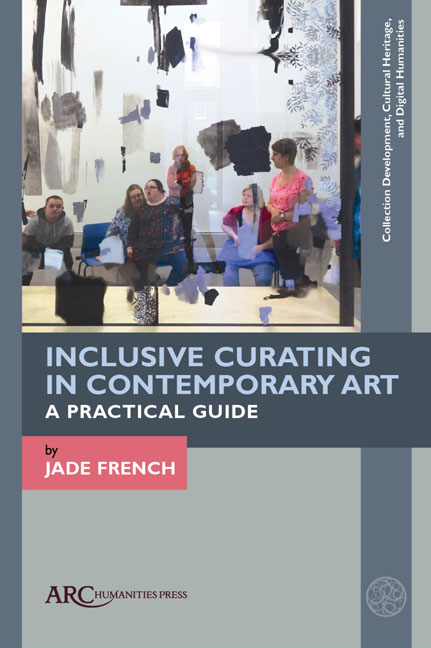Chapter 3 - Acquiring Artwork
Published online by Cambridge University Press: 20 November 2020
Summary
Once inclusive curators have developed their big idea, the focus of the process shifts to acquiring artworks for the exhibition. Curators source artworks through a range of ways. They may select existing pieces of work encountered during research or found in a museum's collection. They could place an open call whereby they advertise for artists or artworks, or they could commission completely new pieces of artwork. The route curators take will likely be informed by the exhibition's parameters: time, budget, and resources. Though inclusive curators could use existing work to curate an exhibition, one of the most exciting and dynamic ways of facilitating inclusive curating is supporting inclusive curators to meet, engage, and collaborate with artists directly to select or commission artwork. For the several inclusively curated exhibitions I have facilitated, they all typically comprise both existing and newly commissioned pieces. As this book focuses on inclusive curating in the context of contemporary art, we will concentrate on working with artists and commissioning artwork which is unique to contemporary art curators, rather than the exploration of collections.
The commissioning of art is an age-old activity and relationships between artists and those who commission them dates back centuries. Early examples of commissioning tended to take the form of direct patronage from an individual of status to an artist. Around 30 CE for example, the Roman Emperor Nero famously commissioned Famulus to paint his three-hundred room villa as the artist was known for “swiftness and delicacy of touch.” Whether artists were commissioned for pleasure, prestige, propaganda, celebration, commemoration, or philanthropy, the act of commissioning art has traditionally been associated with status and considered one of the “highest level of artistic and cultural engagement.” Today, commissions are less frequently granted to artists by individual patrons and more commonly by curators through their institutional capacity, enabling artists to create new work by providing them with financial, institutional, and professional support. Many complex challenges are entangled with commissioning art: conceptual, authorial, cultural, ethical, managerial, financial, legal, and even emotional. Equally, there is no single way to commission contemporary art; the approaches to commissioning are as unique and specific as the artworks generated.
- Type
- Chapter
- Information
- Inclusive Curating in Contemporary ArtA Practical Guide, pp. 59 - 76Publisher: Amsterdam University PressPrint publication year: 2020



